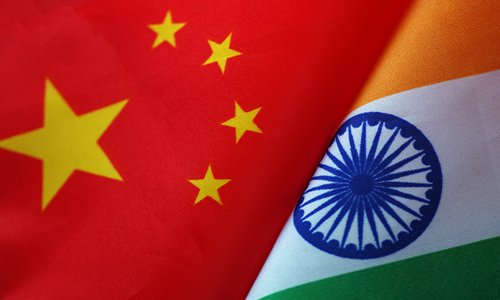HOME >> OPINION
China-India bid can forge united Asia
By Liu Zongyi Source:Global Times Published: 2019/10/8 23:13:40

Photo: IC
Chinese President Xi Jinping and Indian Prime Minister Narendra Modi are slated to hold the second informal meeting in the South Indian coastal town of Mamallapuram in Tamil Nadu later this week after the two leaders held an informal summit in Wuhan in April 2018, according to Indian media reports.
Mamallapuram is a UNESCO world heritage site recognized for being the home to exquisite Hindu statues and stone-carved temples belonging to the Pallava Dynasty.
In the seventh century, during the heyday of the Pallava Dynasty, Xuanzang, a famous monk hailing from the Tang Dynasty (618-907), visited the capital of the Pallavas, which was not far from Mamallapuram.
The Modi government chose Mamallapuram as the site for the upcoming meeting because of its outstanding symbolism. The summit venue apparently goes on to convey that India has been historically ravaged by Muslims and that the country has been a maritime power in the Indian Ocean region in history. It further explicates that India's religion and culture have influenced Asia and the Indian Ocean region, including China.
Both China and India attach great importance to this second informal meeting of the leaders. China hopes that the two countries could continue the spirit of the first informal summit in Wuhan last April, make joint efforts for the common purpose of reviving Asian civilization and view the bilateral relations from the perspective of building an Asian community with shared future and a community with shared future for mankind.
Therefore, China has not postponed or canceled the meeting despite India violating China's territorial sovereignty by declaring Jammu and Kashmir into two union territories - Jammu and Kashmir, and Ladakh. This not only demonstrates China's respect for India's great power status but also indicates that China is well aware that territorial and border disputes can only be resolved through fair negotiations rather than unilateral actions or military threats.
But it may not be the same for India. The second meeting is set to be India's most important bilateral event this year. Since Modi was re-elected prime minister, India's diplomacy with China has become more aggressive. New Delhi even has pushed bilateral trade issues to a political level, which on the one hand is closely related to rising nationalist sentiments in India, while on the other, has links to the China-US trade war and China-US geopolitical competition.
India believes that in the wake of enormous pressure from the US, China will definitely seek good relations with its neighboring countries, including India. Therefore, India may wish to take this opportunity to fulfill some of its diplomatic demands and urge China to support some of its domestic and foreign policies to further enhance India's international status and boost national morale amid the economic downturn.
Yet the China-US trade war didn't offer India a golden opportunity for economic development. India is also confronted with tariff pressure from the Trump administration. As immense uncertainties grip the world, China and India should work together to carry forward the spirit of the Wuhan summit and contribute to building peace and prosperity in Asia and the world.
First, facing an increasingly fierce geopolitical competition in the Asia-Pacific region, China and India have the responsibility to work together to maintain regional peace and stability, which is a requisite for both countries to attain further growth. It is critical for China and India to engage in dialogues on maritime order and security, and to construct an open, inclusive, democratic and equal regional security framework, rather than joining with extraterritorial powers in formulating a set of rules to impose on other countries within the region.
Second, in the face of trade protectionism, anti-globalization, and geopolitical competition, which hinder regional economic cooperation, China and India should jointly promote the establishment of an open economic structure and design a new framework for regional cooperation. The slowdown of India's economy is closely related to its shallow integration into Asian and global industrial, value and supply chains, and its limited openness to the outside world. Thus India should actively integrate into these chains, and link its projects such as the Sagarmala Program with the China-proposed Belt and Road Initiative, to enhance the level of infrastructure in India's coastal regions.
Finally, confronted with ethnic and religious conflicts, border disputes, as well as non-traditional security threats like climate change and water crisis, China and India, two ancient civilizations, should set an example by jointly dealing with these issues and resolve territorial disputes through negotiations and consultation. While learning from the cultural achievements of the West, the two sides should enhance mutual understanding through people-to-people and cultural contacts and dialogues among civilizations, and promote exchanges and dialogues on development and governance models.
The author is secretary-general of the Research Center for China-South Asia Cooperation at Shanghai Institutes for International Studies, a visiting fellow of the Chongyang Institute for Financial Studies, Renmin University of China and a distinguished fellow of the China (Kunming) South Asia & Southeast Asia Institute. opinion@globaltimes.com.cn
Posted in: VIEWPOINT,ASIAN REVIEW